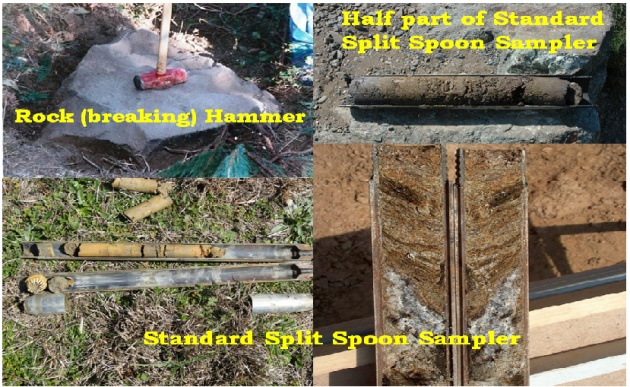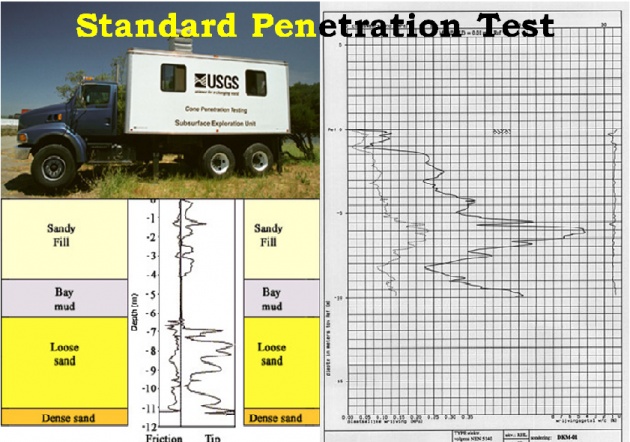TYPES of the Civil Engineering Projects with respect to the Geological Aspects and Investigations:
(i) Structures in which the basic problem is concerned with the foundation only e.g. tall buildings, bridges, long walls, etc.
(ii) Structures which are constructed in and from the earth i.e. fills e.g. under-fills and back-fills of the highways, motorways, railways, tunnels, bridges, culverts, dams & reservoirs, retaining walls, etc.
(iii) Structures which are concerned with the stability of earth slopes e.g. embankments, mounds, levees, etc.
(iv) Structures which are concerned with water-tightness problems – where the geology of water-tightness of the site is involved e.g. rivers, lakes, canals, reservoirs, catchment-areas, etc.
(v) Projects concerned with Ground-water and Hydro-geology
e.g. accessories of dams, reservoirs, rivers, canals, drains and foundations of the bridges
Effects of WATER on the site and foundation of a Civil Engineering Project:
- Special consideration is given to the effects of surface-water and of a big channel or source of water existing near a proposed Civil Engineering Project and effects of the sub-surface water in and under its foundation that is likely to affect the project in the future

Water reduces the Load Bearing Capacity of the foundation of a Civil Engineering Project and causes the deterioration of the cement and concrete structures too
- Projects existing in or close to the water e.g. accessories of dams, reservoirs, rivers, canals and foundations of the bridges as well as the projects to be laid on and inside the ground that is likely to be affected with the water during the heavy rains, e.g. highway, motorway, railway, runway, tunnel, foundations, etc are designed against the worst and aggressive condition of the water i.e. against the heavy rains, rainy season, floods, etc likely to exist around and under a Civil Engineering Structure in the future
- Reccy and Ground-Surveys of the proposed site are carried out (and the site is observed) in the event or just after the event of heavy rains, floods, etc as well as in the maximum dry condition of the site in order to find out the load bearing capacity of the ground in the two extreme climatic conditions and to find out the difference between the dryness and soaking of the ground and hence the behavior and characteristics of the ground in these extremes conditions

- Similarly the Structures (i.e. Structural Members) and Foundations of the tall Civil Engineering Structures e.g. tall buildings, tall bridges, tall dams, etc are designed against the worst and aggressive conditions of earthquakes, winds, hurricanes, any other storm, etc likely to damage a Civil Engineering Structure in the future

- History and information about the floods, earthquakes, winds, hurricanes, any other storm, etc of the nearby Civil Engineering Projects are also checked and studied.



